In recent years, motorcycle manufacturing processes have continued to advance, especially in terms of making lighter and stronger parts. Cold chamber die casting is one of the most important Crankcase die casting manufacturing methods in the industry. We design precise molds to cast metals, resulting in strong, durable and accurate parts used in today’s motorcycles.
Among them, motorcycle engine parts, frames and body parts made of aluminum castings are very popular because they are strong, durable, well-made, and resistant to high temperatures.

Aluminum Crankcase die casting is a preferred manufacturing method for motorcycle engine crankcases due to its ability to produce lightweight, durable, and complex components with high precision. Below is a detailed analysis of its benefits, process considerations, and industry applications.
Details of aluminum alloy crankshaft die casting
Let’s introduce the application effects of aluminum alloy die-casting industry from the perspective of accessory products.
- Why Aluminum Die Casting for Crankcases?
- Key Process Considerations
- Design and Performance Features
- Challenges and Solutions
- Industry Applications
- Cost and Lead Time Estimates
- Comparison with Alternatives
Why Aluminum Die Casting for Crankcases?
- Lightweight Design
- Aluminum’s low density (2.7 g/cm³) reduces overall engine weight, improving fuel efficiency and handling.
- High Strength-to-Weight Ratio
- Alloys like A380 and A383 provide excellent mechanical strength (ultimate tensile strength: 310–330 MPa) while remaining lightweight.
- Heat Dissipation
- Aluminum’s thermal conductivity (96–120 W/m·K) helps dissipate engine heat, preventing overheating.
- Complex Geometry
- Die casting enables intricate internal channels, mounting points, and oil passages in a single piece.
- Cost Efficiency
- High-volume production reduces per-unit costs, and near-net-shape casting minimizes machining.
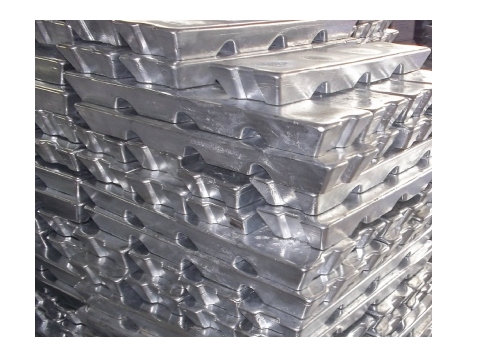
Key Process Considerations
- Alloy Selection
- A380: Most common for crankcases due to its fluidity, strength, and corrosion resistance.
- A383 (ADC12): Improved die life and reduced hot cracking, ideal for thin-walled sections.
- A356-T6: Heat-treatable for enhanced strength (UTS: 290 MPa) in high-performance engines.
- Vacuum-Assisted Die Casting
- Reduces porosity (<1%) by evacuating air from the mold, critical for pressure-tight crankcases.
- Secondary Processes
- T6 Heat Treatment: Enhances hardness and fatigue resistance.
- CNC Machining: Ensures precise bearing and cylinder bore tolerances (±0.02 mm).
- Surface Coatings: Anodizing or powder coating improves corrosion resistance.
Design and Performance Features
- Integrated Cooling Fins: Die-cast fins improve airflow for heat dissipation.
- Ribbed Structures: Reinforce critical areas (e.g., mounting points) without adding weight.
- Oil Galleries: Smooth internal channels for efficient lubrication, cast in one piece.
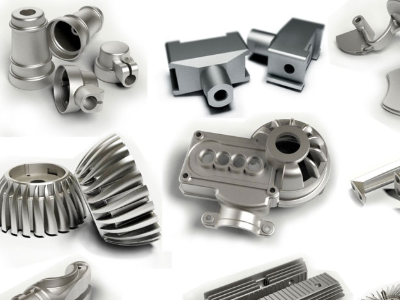
Challenges and Solutions
| Challenge | Solution |
|---|---|
| Porosity in Critical Zones | Vacuum die casting or HIP (Hot Isostatic Pressing) |
| Thermal Distortion | Optimized cooling channels in the die |
| Tooling Costs | Amortized over high-volume production runs |
Industry Applications

- Sport Bikes: High-revving engines (e.g., Yamaha YZF-R1) use A380 crankcases for strength and heat management.
- Electric Motorcycles: Lightweight die-cast housings for electric motors and battery mounts.
- Off-Road Bikes: Durable A383 crankcases resistant to vibration and impact.
Cost and Lead Time Estimates
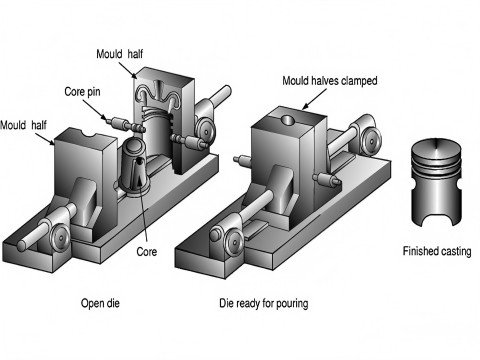
- Tooling Cost: 20,000–20,000–80,000 (depending on complexity).
- Production Cost: 10–10–50 per unit (for 10,000+ units).
- Lead Time: 8–12 weeks for tooling; 2–4 weeks for mass production.
Comparison with Alternatives
| Method | Pros | Cons |
|---|---|---|
| Sand Casting | Low tooling cost | Poor surface finish, heavier |
| CNC Machining | High precision | High material waste, slow |
| Gravity Casting | Good for prototypes | Limited complexity, porosity |
What material is a crankcase on a motorcycle?
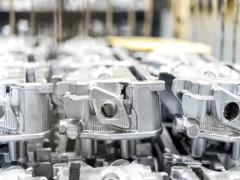
Motorcycle engine crankcases are typically made from aluminum alloys due to their ideal balance of strength, weight, and thermal properties. Here’s a detailed breakdown of the materials and their applications:
- Primary Material: Aluminum Alloys
- Alternative Materials
- Manufacturing Process
- Why Not Other Materials?
Primary Material: Aluminum Alloys
- Lightweight: Aluminum’s low density (2.7 g/cm³) reduces overall engine weight, improving fuel efficiency and handling,it’s better for Crankcase die casting.
- Thermal Conductivity: Efficiently dissipates heat from the engine (96–120 W/m·K).
- Strength: High strength-to-weight ratio, especially when alloyed with elements like silicon, copper, or magnesium.
- Corrosion Resistance: Naturally resistant to rust, though coatings may be added for harsh environments.
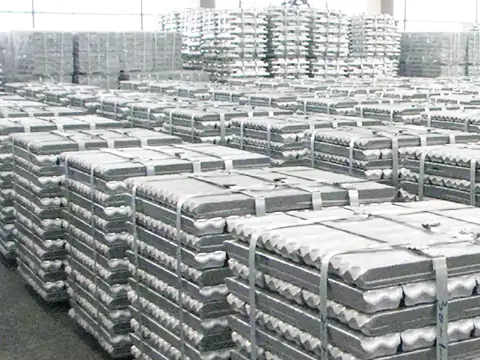
Common Aluminum Alloys for Crankcases:
- A380 (ADC10):
- Most widely used for its excellent fluidity during casting, good mechanical strength, and cost-effectiveness.
- Properties: Tensile strength ~315 MPa, hardness ~80 HB.
- Applications: Standard street bikes (e.g., Honda CBR, Yamaha MT series).
- A356 (A356-T6):
- Heat-treatable alloy with superior strength and fatigue resistance.
- Properties: Tensile strength ~290 MPa (up to 330 MPa after T6 heat treatment).
- Applications: High-performance motorcycles (e.g., Ducati Panigale, Kawasaki Ninja).
- A383 (ADC12):
- Improved die life and reduced hot cracking compared to A380.
- Properties: Tensile strength ~310 MPa.
- Applications: Durable off-road bikes (e.g., KTM EXC, Honda CRF).
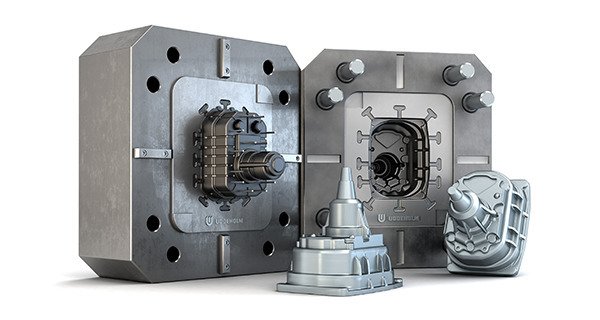
Alternative Materials
- Magnesium Alloys (e.g., AZ91D):
- Pros: Lighter than aluminum (1.8 g/cm³) with good strength.
- Cons: Higher cost, lower corrosion resistance, and flammability risk in molten state.
- Applications: Rarely used for crankcases; more common in racing components.
- Cast Iron:
- Pros: High wear resistance and durability.
- Cons: Heavy (7.8 g/cm³), leading to poor power-to-weight ratios.
- Applications: Older motorcycles (e.g., vintage Harley-Davidson, Royal Enfield models).
- Steel:
- Rarely used for Crankcase die casting due to weight, but sometimes employed for reinforcement in high-stress areas.
Manufacturing Process
Most modern crankcases are made via high-pressure die casting (HPDC) for precision and efficiency. Key steps include:
- Die Casting: Molten aluminum is injected into a steel mold under high pressure.
- Heat Treatment: For alloys like A356-T6, aging enhances strength.
- CNC Machining: Post-casting machining ensures precise tolerances for bearings, cylinder bores, and mating surfaces.
- Surface Treatments: Anodizing, powder coating, or chromate conversion coatings improve corrosion resistance.
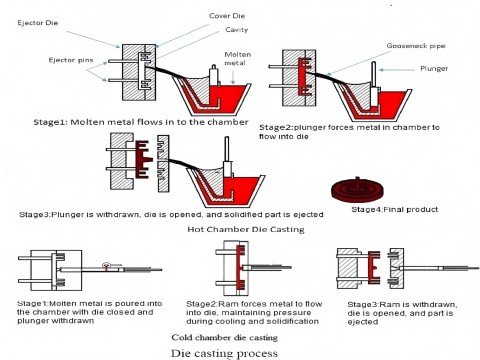
Why Not Other Materials?
- Plastics/Composites: Lack the strength and heat resistance required for crankcases.
- Titanium: Prohibitively expensive and difficult to cast.
Key Considerations
- Heat Management: Aluminum’s thermal conductivity prevents engine overheating.
- Vibration Resistance: Reinforced ribs and gussets in the design mitigate stress.
- Cost vs. Performance: A380 balances affordability and durability, while A356-T6 suits premium applications.
Aluminum alloys (A380, A356, A383) are the standard materials for motorcycle crankcases, offering an optimal mix of lightweight design, strength, and heat dissipation. While magnesium and cast iron are niche alternatives, aluminum remains dominant due to its versatility and cost-effectiveness in high-volume production. For custom or racing applications, specialized alloys and coatings may be used to push performance limits.
Haichen Aluminum Alloy Crankcase Die Casting Machine
Among the aluminum alloy die-casting machines produced by Haichen, there are several cold chamber die-casting machines suitable for die-casting production of automotive parts such as crankcases:
- Applicable models and series
- Core technical features
- Industry applications
- Quality and certification
Applicable models and series
HCD-C series cold chamber die-casting machines:
Designed for non-ferrous metals such as aluminum alloys, with tonnage ranging from 90 tons to 1600 tons, it adopts four-stage shot pressure control (slow shot, first fast shot, second fast shot, boost shot pressure), which can accurately control the flow of aluminum liquid, reduce pores and turbulence, and is suitable for die-casting of high-precision parts such as crankcases.
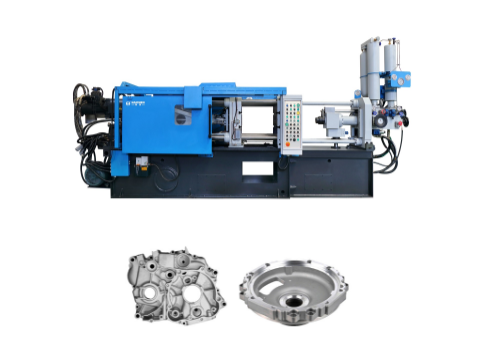
For example:
HCD 200-C (200 tons):
Extrusion force 2000 kN, die-casting thickness range 200-580 mm, maximum casting volume 1.3/1.8 kg, suitable for small and medium-sized parts.
HCD880-C (880 tons):
Clamping force 880 tons, maximum casting volume up to 10.4 kg, suitable for larger engine parts.
HCC220 aluminum-magnesium alloy die-casting machine:
With a clamping force of 2200 kN and a maximum dry shot speed of more than 7 m/s, it is suitable for large castings in the fields of aviation, automobiles, etc., such as engine suspension brackets, etc.
Core technical features
Precision control:
Adopting hydraulic components from brands such as MITSUBISHI and Vickers, combined with servo control technology, it realizes closed-loop control of injection speed and pressure to ensure the density of castings.
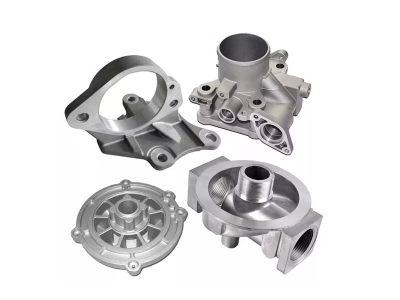
High adaptability:
Supports single-cavity or double-cavity mold design, and the injection position can be customized (0 to -140 mm) to meet the process requirements of different crankcase structures.
Automation integration:
Optional auxiliary equipment such as automatic sprayers, pick-up machines, and pouring machines can be used to improve production efficiency.
Industry applications
Haichen’s cold chamber die-casting machines are widely used in the fields of automobile and motorcycle parts, including crankcases, engine suspension brackets, radiators, etc., and the cases cover the automotive industry chain in markets such as Mexico and Russia.

For example:
Haichen aluminum alloy crankcase die casting machine adopts high pressure die casting technology (material ADC12) to provide die casting solutions for lightweight vehicles, including mold design and process optimization, supporting integrated die casting technology.
Quality and certification
Haichen die casting machine complies with JB/T8083-2000 industry standards and EU CE safety standards, and key components are analyzed by finite element analysis to ensure durability.
Provide ISO9001 certification and lifetime maintenance services, and respond to quality issues within 48 hours.
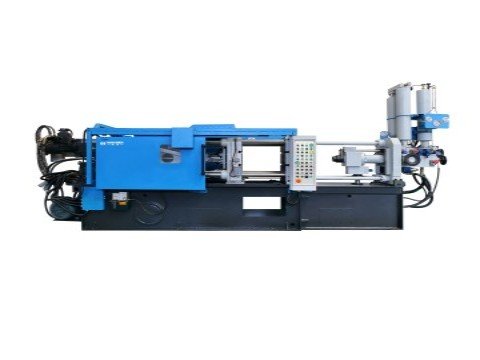
Haichen’s cold chamber die casting machines (such as the HCD-C series) are ideal for aluminum alloy crankcase production. Its high-precision control, flexible configuration and industry experience can meet the manufacturing needs of small and medium-sized to large parts.
The specific model needs to be selected according to the casting size (such as projected area, thickness) and production requirements. HCD 200-C is suitable for small crankcases, while HCD880-C is suitable for larger engine parts.
By the end
Aluminum Crankcase die casting is the optimal choice for motorcycle engine crankcases, offering a balance of lightweight design, structural integrity, and cost-effective high-volume production. Advances in vacuum-assisted casting and alloy development continue to enhance performance, making it indispensable for modern engine manufacturing.



